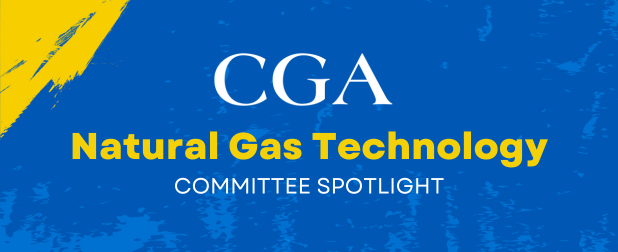Committee Spotlight: Natural Gas Technology
There are over 27 committees dedicated to supporting the CGA mission of providing technical and safety information through standard development.
Who are these committees, what are their individual missions, and what do they bring to CGA members and the compressed gas industry?
Natural Gas Technology Committee
Chair: Grant A. Madison
Vice-Chair: Mark Babcock
The Compressed Gas Association’s Natural Gas Committee is a group of experts in the natural gas industry who are committed to advancing the safe and effective use of natural gas. The committee is made up of representatives from member companies involved in natural gas production, transportation, and distribution, as well as experts in safety, engineering, and regulatory compliance. The committee works to develop and promote industry best practices, standards, and guidelines related to the handling, storage, and transport of natural gas. Additionally, the committee collaborates with regulatory agencies and other industry groups to ensure that natural gas is used safely and efficiently in all applications.
The committee has developed a suite of consensus-based publications to provide safety guidance in several critical areas, including:
CGA G-19 provides general information about the properties, transportation, storage, handling, and use of LNG and CNG. It covers the hazards and safeguards associated with natural gas and gives readers best practices for safe use and handling of natural gas. CGA G-19 is a great starter document for those with an interest in learning the basics of natural gas technology and operations.
CGA G-19.1 provides requirements for the design, installation, maintenance, and removal of LNG and CNG supply systems. It provides material on the site selection, design, installation, start-up, operation, and maintenance of natural gas supply systems. The focus of CGA G-19.1 is natural gas supply systems at customer locations.
CGA G-19.2 provides requirements for the safe transfer and transportation of LNG and CNG. The requirements apply to filling the transport vehicle, moving the transport vehicle to the customer facility, and filling the customer supply system from the transport vehicle. CGA G-19.2 provides best practices for the delivery process from the production site to the customer site.
CGA G-19.3 provides best practices for putting into natural gas service equipment which had been in industrial gas service such as oxygen, nitrogen, argon, hydrogen, or helium. This standard does not deal with the reverse process – putting into industrial gas service equipment that was previously in natural gas service. CGA G-19.3 allows users to find new uses for equipment that was not originally in natural gas service.
CGA G-19.4 provides a methodology to calculate the maximum required impoundment area for LNG storage systems to contain spills. The methodology provides realistic and useable techniques to meet the functional requirements of NFPA 59A and other model codes and standards.
Ready to Get Involved?
CGA’s Natural Gas Technology Committee would welcome additional members to work on current publications and projects as well as to help develop new work to benefit the natural gas industry. If interested or for more information about the committee, contact CGA at cga@cganet.com.
Interested in CGA’s other Fuel Gas Committees? See our spotlight on CGA’s Acetylene and Liquefied Petroleum Gas Committees.


